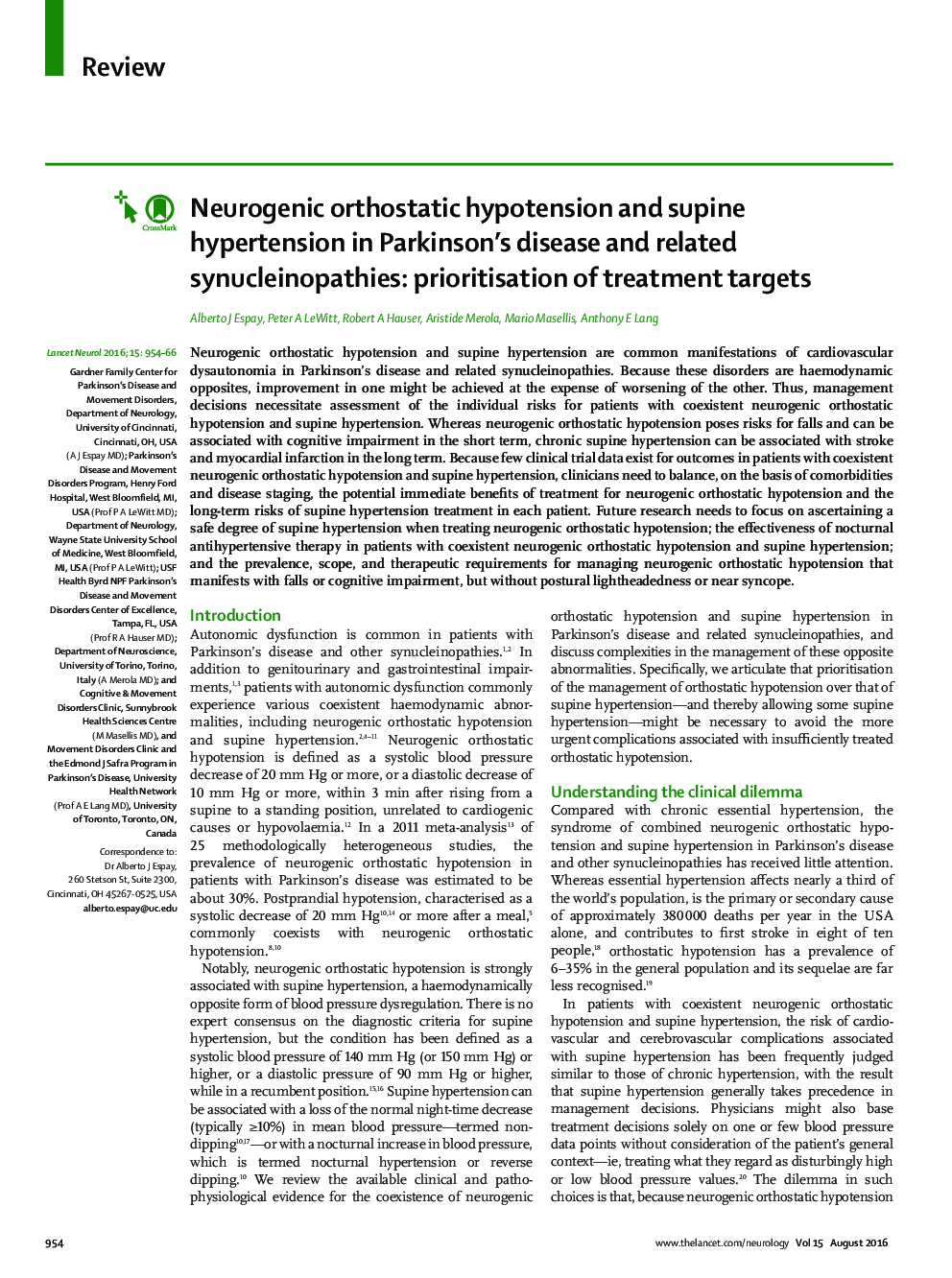| Article ID | Journal | Published Year | Pages | File Type |
|---|---|---|---|---|
| 3066368 | The Lancet Neurology | 2016 | 13 Pages |
SummaryNeurogenic orthostatic hypotension and supine hypertension are common manifestations of cardiovascular dysautonomia in Parkinson's disease and related synucleinopathies. Because these disorders are haemodynamic opposites, improvement in one might be achieved at the expense of worsening of the other. Thus, management decisions necessitate assessment of the individual risks for patients with coexistent neurogenic orthostatic hypotension and supine hypertension. Whereas neurogenic orthostatic hypotension poses risks for falls and can be associated with cognitive impairment in the short term, chronic supine hypertension can be associated with stroke and myocardial infarction in the long term. Because few clinical trial data exist for outcomes in patients with coexistent neurogenic orthostatic hypotension and supine hypertension, clinicians need to balance, on the basis of comorbidities and disease staging, the potential immediate benefits of treatment for neurogenic orthostatic hypotension and the long-term risks of supine hypertension treatment in each patient. Future research needs to focus on ascertaining a safe degree of supine hypertension when treating neurogenic orthostatic hypotension; the effectiveness of nocturnal antihypertensive therapy in patients with coexistent neurogenic orthostatic hypotension and supine hypertension; and the prevalence, scope, and therapeutic requirements for managing neurogenic orthostatic hypotension that manifests with falls or cognitive impairment, but without postural lightheadedness or near syncope.
